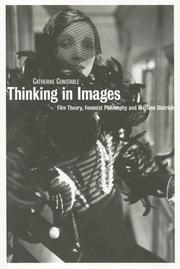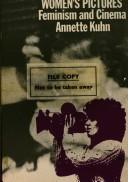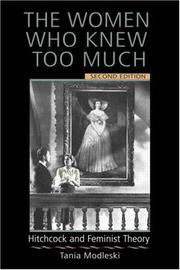| Listing 1 - 10 of 29 | << page >> |
Sort by
|
Book
ISBN: 9780822342601 9780822342755 Year: 2008 Publisher: Durham : Duke University Press,
Abstract | Keywords | Export | Availability | Bookmark
 Loading...
Loading...Choose an application
- Reference Manager
- EndNote
- RefWorks (Direct export to RefWorks)
Film --- Iran --- Motion pictures --- Women in motion pictures. --- Cinéma --- Femmes au cinéma --- History. --- Histoire --- Cinéma --- Femmes au cinéma
Book
ISBN: 9052012105 9789052012100 Year: 2005 Volume: 2 Publisher: Frankfurt am Main ; Berlin ; Bern [etc.] : Peter Lang,
Abstract | Keywords | Export | Availability | Bookmark
 Loading...
Loading...Choose an application
- Reference Manager
- EndNote
- RefWorks (Direct export to RefWorks)
Larmes, sacrifices, pathos. Le Mélodrame a longtemps été réduit à ces termes, uniquement considéré comme objet d'analyse une fois intégré dans une politique auteuriste. Pourtant, et peut-être paradoxalement, le genre tire également de ses racines théâtrales un principe fondateur: «le mal est moteur de l'action». Cet ouvrage reconsidère le Mélodrame à partir de cette idée en proposant un nouveau sous-genre, le Mélodrame Maléfique, qui s'articule autour d'un personnage principal: l'héroïne maléfique. Emblématique de l'état d'esprit qui règne aux États-Unis dans les années 1940 et qui implique la nécessité de dénoncer tous les comportements anti-américains, l'héroïne maléfique est l'illustration parfaite de la prédétermination narrative et stylistique du Mélodrame. Dans la même perspective, elle se définit aussi par une structuration mythique, comme en témoignent des films comme Leave Her to Heaven (John Stahl, 1945) ou Beyond the Forest (King Vidor, 1949). Mais a-t-elle uniquement valeur de contre-exemple? Quel est l'effet créé par le jeu de stars hollywoodiennes dont le pouvoir d'identification et de fascination semble en contradiction avec les visées moralisatrices du genre?
Melodrama in motion pictures. --- Women in motion pictures. --- Motion pictures --- Mélodrame au cinéma --- Femmes au cinéma --- Cinéma --- Mélodrame au cinéma --- Femmes au cinéma --- Cinéma --- Motion pictures - United States.
Book
ISBN: 9782296544444 Year: 2011 Volume: *3 Publisher: Paris L'Harmattan
Abstract | Keywords | Export | Availability | Bookmark
 Loading...
Loading...Choose an application
- Reference Manager
- EndNote
- RefWorks (Direct export to RefWorks)
Etude de la représentation du féminin dans les films d'animation japonais contemporains. En se basant sur les films de science-fiction "Ghost in the shell", l'auteur identifie les mécanismes du désir associé au corps artificiel et au corps féminin. Il aborde l'invisibilité des sexes et critique l'érotisation accrue des corps d'enfants.
Animated films --- Feminine beauty (Aesthetics) --- Women in motion pictures --- Dessins animés --- Beauté féminine (Esthétique) --- Femmes au cinéma --- Dessins animés --- Beauté féminine (Esthétique) --- Femmes au cinéma
Book
ISBN: 9780230617360 0230617360 1349380385 9786612908736 0230105203 1282908731 Year: 2010 Publisher: New York, NY : Palgrave Macmillan,
Abstract | Keywords | Export | Availability | Bookmark
 Loading...
Loading...Choose an application
- Reference Manager
- EndNote
- RefWorks (Direct export to RefWorks)
Sociology of the family. Sociology of sexuality --- Film --- Mediterranean countries --- Feminist films --- Women in motion pictures. --- Women motion picture producers and directors --- Cinéma féministe --- Femmes au cinéma --- Productrices et réalisatrices de cinéma --- History and criticism --- Biography --- Histoire et critique --- Biographies --- Cinéma féministe --- Femmes au cinéma --- Productrices et réalisatrices de cinéma

ISBN: 1844571017 1844571009 Year: 2005 Publisher: London : BFI,
Abstract | Keywords | Export | Availability | Bookmark
 Loading...
Loading...Choose an application
- Reference Manager
- EndNote
- RefWorks (Direct export to RefWorks)
Film --- Women in motion pictures --- Image (Philosophy) --- Feminism and motion pictures. --- Feminist theory. --- Femmes au cinéma --- Image (Philosophie) --- Féminisme et cinéma --- Théorie féministe --- History. --- Histoire --- Dietrich, Marlene. --- Femmes au cinéma --- Féminisme et cinéma --- Théorie féministe --- Dietrich, Marlene --- Movie review --- Movies --- Philosophy --- Appearance --- Images of women --- Féminité --- Actors --- Book
Book
ISBN: 0231101139 0231101120 9780231101127 9780231101134 Year: 1995 Volume: *3 Publisher: New York Columbia University Press
Abstract | Keywords | Export | Availability | Bookmark
 Loading...
Loading...Choose an application
- Reference Manager
- EndNote
- RefWorks (Direct export to RefWorks)
Femmes dans le cinéma --- Vrouwen in de film --- Women in motion pictures --- Femmes au cinéma --- Ophuls, Max, --- Criticism and interpretation --- Women in motion pictures. --- Femmes au cinéma --- Ophuls, Max --- Ophuls, Max, - 1902-1957 - Criticism and interpretation. --- Criticism and interpretation. --- 791.471 OPHULS --- CDL --- Motion pictures --- Oppenheimer, Max, --- Opuls, Max,

ISBN: 0710090447 Year: 1982 Publisher: London Routledge and Kegan Paul
Abstract | Keywords | Export | Availability | Bookmark
 Loading...
Loading...Choose an application
- Reference Manager
- EndNote
- RefWorks (Direct export to RefWorks)
Feminism and motion pictures --- Women in motion pictures --- Féminisme et cinéma --- Femmes au cinéma --- 791.43 --- 396 --- Motion pictures --- Motion pictures and feminism --- Feminisme. Vrouwenbeweging. Vrouw en maatschappij --- 396 Feminisme. Vrouwenbeweging. Vrouw en maatschappij --- Féminisme et cinéma --- Femmes au cinéma --- CDL
Book
ISBN: 2890520765 Year: 1983 Publisher: Montréal, Québec : Boréal Express,
Abstract | Keywords | Export | Availability | Bookmark
 Loading...
Loading...Choose an application
- Reference Manager
- EndNote
- RefWorks (Direct export to RefWorks)
Women in the motion picture industry --- Feminist motion pictures --- Women in motion pictures --- Femmes dans l'industrie cinématographique --- Cinéma féministe --- Femmes au cinéma --- Feminist films --- Femmes dans l'industrie cinématographique --- Cinéma féministe --- Femmes au cinéma --- Cinema quebecois --- Droits de la femme

ISBN: 9780415973625 0415973627 Year: 2005 Publisher: New York : Routledge,
Abstract | Keywords | Export | Availability | Bookmark
 Loading...
Loading...Choose an application
- Reference Manager
- EndNote
- RefWorks (Direct export to RefWorks)
Women in motion pictures. --- Feminism and motion pictures. --- Motion pictures and women. --- Femmes au cinéma --- Féminisme et cinéma --- Cinéma et les femmes --- Hitchcock, Alfred, --- Criticism and interpretation. --- Hitchcock, Alfred --- Femmes au cinéma --- Féminisme et cinéma --- Cinéma et les femmes
Book
ISBN: 9781845456054 184545605X 0857456172 9786612628023 1845459458 128262802X 0857456180 Year: 2009 Publisher: New York : Berghahn Books,
Abstract | Keywords | Export | Availability | Bookmark
 Loading...
Loading...Choose an application
- Reference Manager
- EndNote
- RefWorks (Direct export to RefWorks)
The history of postwar German cinema has most often been told as a story of failure, a failure paradoxically epitomized by the remarkable popularity of film throughout the late 1940s and 1950s. Through the analysis of 10 representative films, Hester Baer reassesses this period, looking in particular at how the attempt to 'dismantle the dream factory' of Nazi entertainment cinema resulted in a new cinematic language which developed as a result of the changing audience demographic. In an era when female viewers comprised 70 per cent of cinema audiences a 'women's cinema' emerged, which sought
Motion pictures --- Motion pictures for women --- Motion picture audiences --- Women in motion pictures. --- Cinéma --- Films de femme --- Femmes au cinéma --- History --- Social aspects --- Histoire --- Aspect social --- Publics --- Cinéma --- Femmes au cinéma --- Film audiences --- Filmgoers --- Moviegoers --- Moving-picture audiences --- Performing arts --- Moving-pictures for women --- Women --- Cinema --- Feature films --- Films --- Movies --- Moving-pictures --- Audio-visual materials --- Mass media --- Audiences --- History and criticism
| Listing 1 - 10 of 29 | << page >> |
Sort by
|

 Search
Search Feedback
Feedback About
About Help
Help News
News